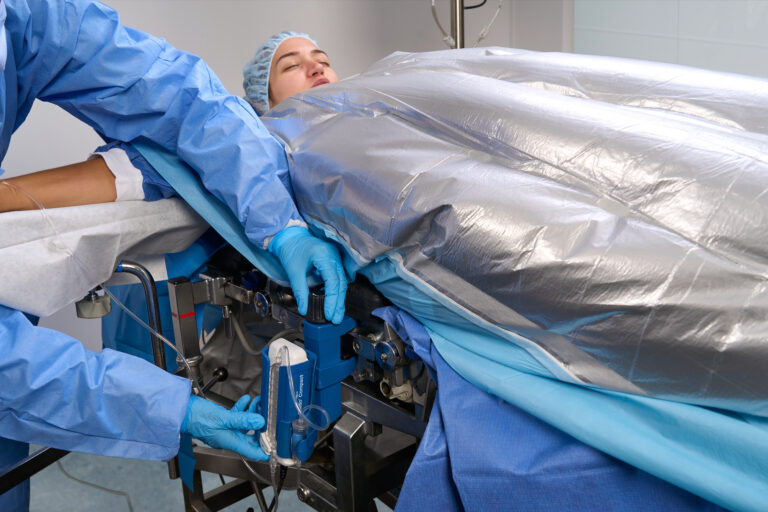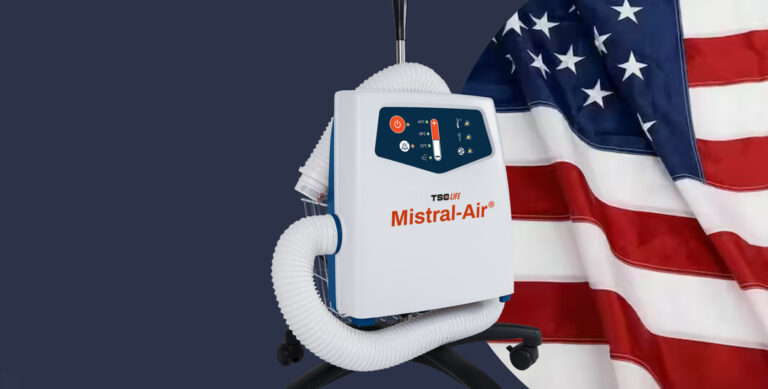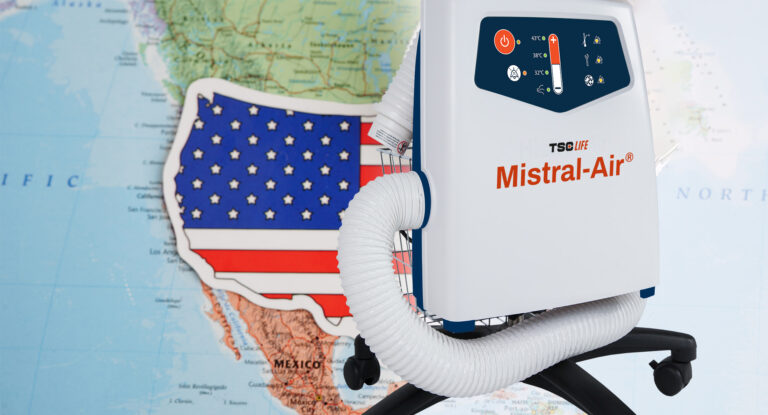Why Single-Use Warming Blankets Set the Standard in Patient Care

In modern healthcare, patient warming plays a critical role in ensuring optimal surgical outcomes and reducing the risks associated with hypothermia. While reusable warming solutions have traditionally been part of hospital protocols, single-use warming blankets like Mistral-Air® are the gold standard in efficiency, safety, and hygiene.
The Challenges of Reusable Warming Solutions
Many healthcare facilities continue to rely on reusable warming blankets. However, reusable blankets come with inherent challenges that can impact both patient safety and hospital operations.
- Cross-Contamination Risks: Despite strict cleaning protocols, manual disinfection of reusable warming blankets carries the risk of human error. Studies have shown that improper cleaning procedures may lead to contamination, posing potential infection risks to patients1.
- Complicated Reprocessing: Reusable blankets require intensive washing and/or sterilization procedures, consuming significant time and resources. The logistics of washing, drying, and storing these bulky blankets can add operational burdens to hospital staff2.
- Material Degradation Over Time: Frequent washing and high-temperature sterilization can compromise the material’s ability to distribute heat evenly, potentially leading to temperature inconsistencies that affect patient warming3.
- Environmental Considerations: Reusable blankets require substantial water and energy consumption for repeated washing and reprocessing. Studies suggest that inefficient cleaning processes can contribute to extended ICU stays and increased carbon emissions4.
Why Mistral-Air® Single-Use Blankets Stand Out
Mistral-Air® single-use blankets offer a streamlined alternative that prioritizes safety, performance, and efficiency.
- Consistent Performance: Engineered for optimal heat distribution, Mistral-Air® blankets provide uniform convective warming, helping to prevent unintended temperature fluctuations that could lead to hypothermia or burns5.
- Hygiene & Safety First: Single-use blankets are manufactured in a controlled environment, which eliminates the risks associated with improper disinfection or cross-contamination, ensuring that every patient receives a fresh, uncontaminated warming solution1.
- Operational Simplicity: Unlike reusable options, Mistral-Air® blankets require no reprocessing. This simplifies workflows, reduces staff workload, and allows hospitals to allocate resources more efficiently2.
- Proven Effectiveness: Research has demonstrated that forced-air warming, as used in Mistral-Air® blankets, warms at twice the rate of conductive warming systems. This rapid warming capability is crucial for maintaining patient body temperature during surgical procedures6.
A Smarter Choice for Healthcare Providers
With over 10 million patients benefiting from Mistral-Air® single-use blankets each year, it’s clear why many hospitals and surgical centres are making the switch. The ability to provide consistent, safe, and efficient warming without the challenges of reusable solutions makes single-use warming blankets an optimal choice for modern healthcare facilities.
As hospitals continue to seek innovations that enhance patient outcomes while improving operational efficiency, Mistral-Air® sets the standard in safe, effective, and sustainable patient warming.
Looking for a reliable patient warming solution?
Contact our team to learn more about how Mistral-Air® can support your healthcare facility.
References
- Department of Health and Social Care. (2019). Mattress decontamination poster. https://assets.publishing.service.gov.uk/media/5d289fff40f0b64a84cda413/Mattress_decontamination_poster-2019.pdf
- Hot Dog Warming. (2017). Instruction manual for model 2628EN [Warnings Section]. https://hotdogwarming.com/wp-content/uploads/2628EN.pdf
- Hot Dog Warming. (2017). Instruction manual for model 2628EN [Cleaning and Disinfecting Section]. https://hotdogwarming.com/wp-content/uploads/2628EN.pdf
- Gaetani, M., Uleryk, E., Halgren, C., et al. (2024). The carbon footprint of critical care: A systematic review. Intensive Care Medicine, 50, 731–745. https://doi.org/10.1007/s00134-023-07307-1
- Röder, G., Sessler, D. I., Roth, G., Schopper, C., Mascha, E. J., & Plattner, O. (2011). Intra-operative rewarming with Hot Dog® resistive heating and forced-air heating: A trial of lower-body warming. Anaesthesia, 66(7), 667-674. https://doi.org/10.1111/j.1365-2044.2011.06722.x



